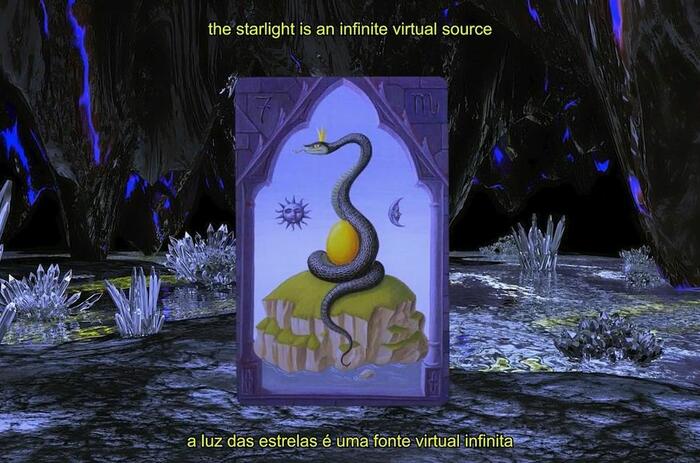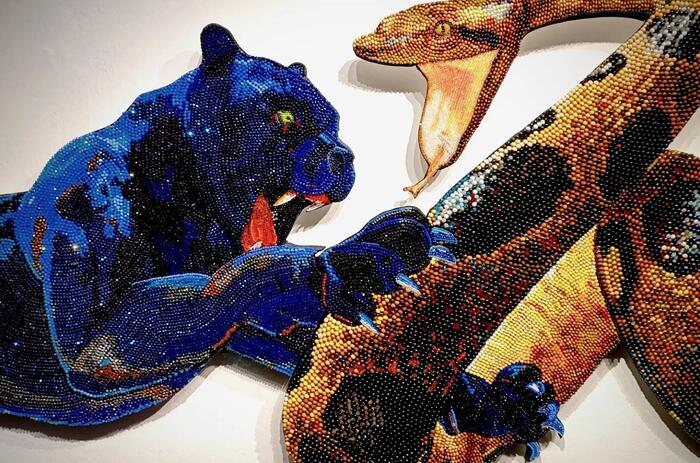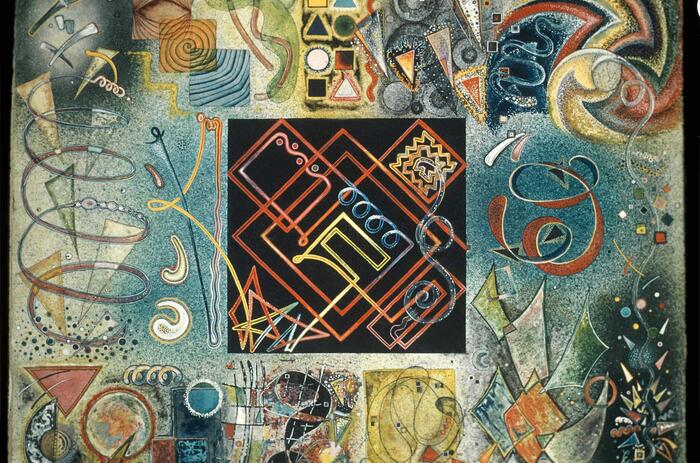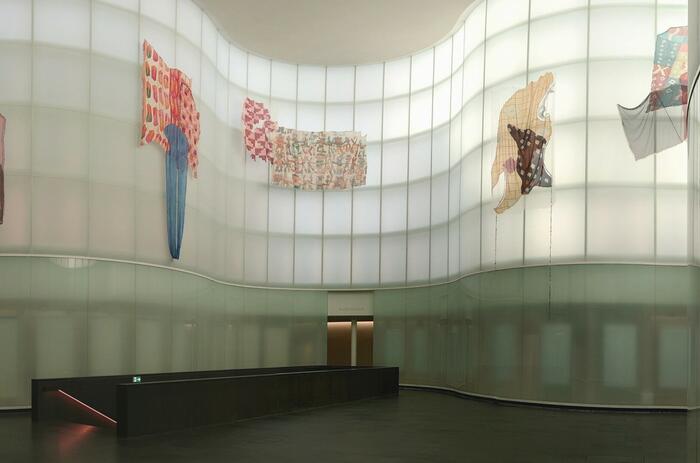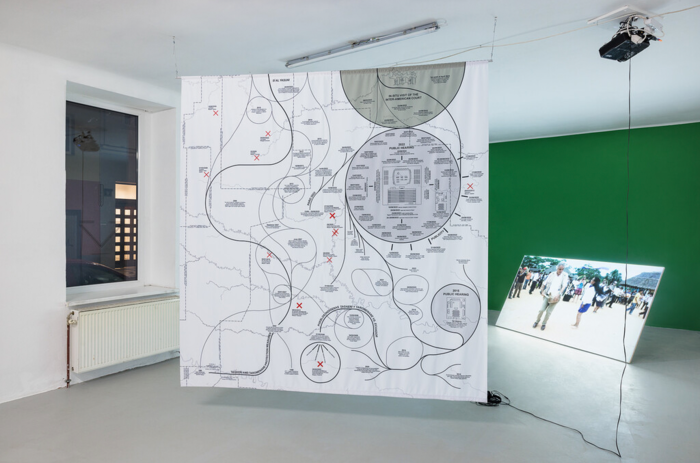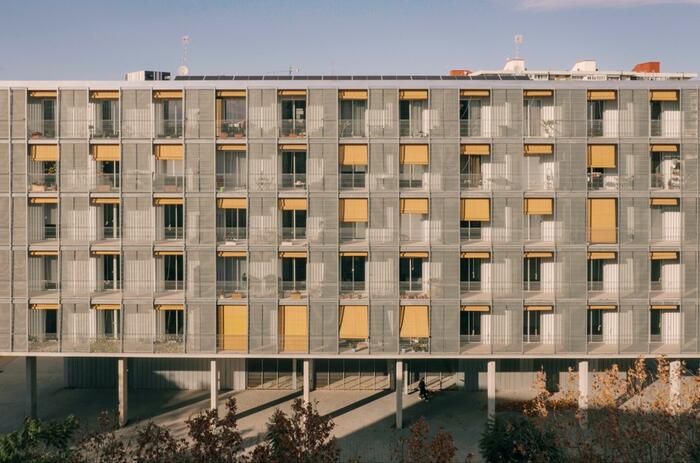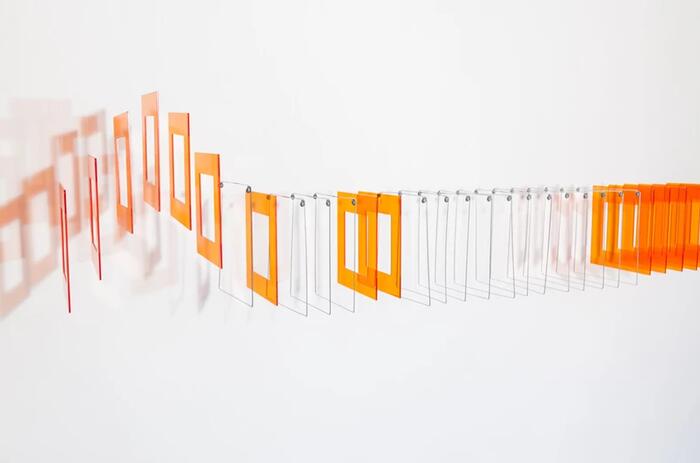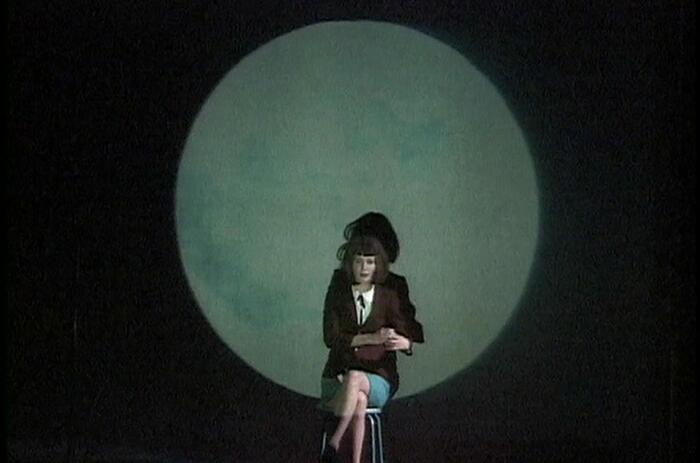SARACENO’S CATHOLIC CONFESSIONAL BOX INSTALLATION
Life(s) of Webs, arachnophobias, arachnophilias, and other stories is a permanent installation at Chiesa della Madonna del Carmine, Palazzo Lanfranchi by Tomás Saraceno, arrived in Matera, Italy with a project of the Matera Basilicata 2019 Foundation in collaboration with the National Museum of Matera.
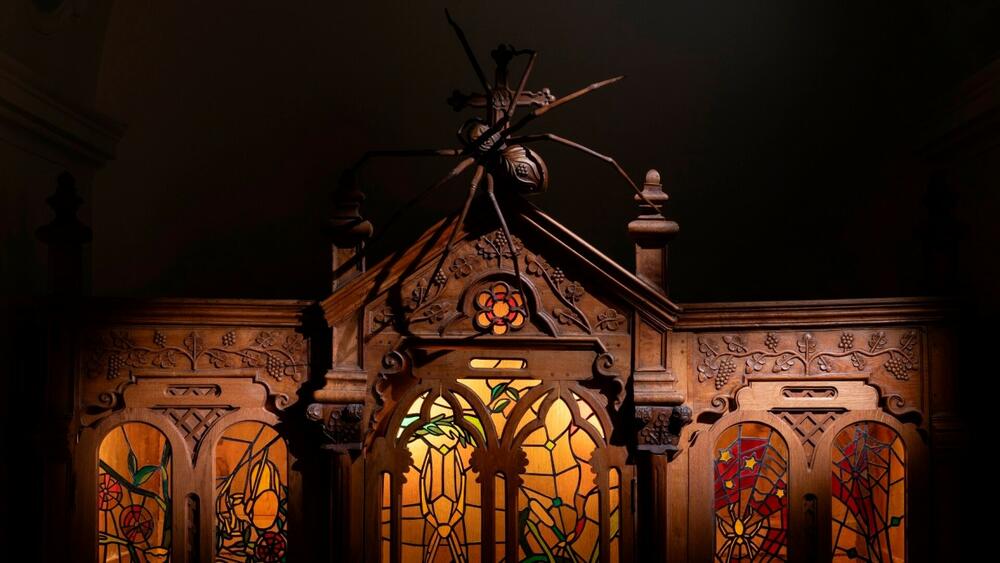
Saraceno’s artwork is a Catholic confessional box, in which spider/webs emerge in the place of the priest, with the intention to share their ancestral wisdom. It’s a call to humanity, one to listen closely to: “we have lived on Earth for more than 380 million years, while most of you humans, merely 200 thousand years… we invertebrates represent 95% of all animals on planet Earth, yet we are threatened by extinction, something that would endanger all lives on earth. We ask you to care for the rights of our webs of life. Can we join forces and weave together ways of living, with lifestyles that do not affect climates, for more just, eco-social inter-intra-species societies for all?”
It is through a new syncretic ensemble of myths, beliefs, liturgies, ceremonies, histories of divination, rituals, food practices, songs & dances, that Lives of webs responds to this call. “We invite you to join us in this movement for new collective multispecies futures. Come closer, sense wisely, feel the vibrations. Every contribution matters. These are times to act and to be part of something larger, and infinitely smaller, than yourself”.
-
Tomás Saraceno. Life(s) of Webs, arachnophobias, arachnophilias, and other stories. Photo: Amadeo Benestante. Courtesy of Fonzadione Matera Basilicata.
-
Tomás Saraceno. Life(s) of Webs, arachnophobias, arachnophilias, and other stories. Photo: Amadeo Benestante. Courtesy of Fonzadione Matera Basilicata.
Saraceno’s repeat visits to Matera, starting nine years ago and culminating in July 2022 with his visit to the National Museum of Matera and to the Church of Carmine—located inside the museum at Palazzo Lanfranchi—fostered inspiration which led to the creation of the Life(s) of Webs, arachnophobias, arachnophilias, and other stories confessional. Saraceno has grasped the intrinsic spiritual value of the city of the Sassi, which is well suited to accommodate the holistic and universal nature of its glass showcases with the hybrid spider webs inside, created through the sequential collaboration of spiders of different species: solitary, semi-social and social. The spider webs are also understood as a sublunar mirror due to their similarity and resemblance to dark matter, the cosmic web that supports galaxies and worlds, visible only through the gravitational lens, which vibrates in astral time, generating the worldly music that the Pythagoreans already told us about and which we now call cosmic background noise.
-
Tomás Saraceno. Life(s) of Webs, arachnophobias, arachnophilias, and other stories. Photo: Amadeo Benestante. Courtesy of Fonzadione Matera Basilicata.
-
Tomás Saraceno. Life(s) of Webs, arachnophobias, arachnophilias, and other stories. Photo: Amadeo Benestante. Courtesy of Fonzadione Matera Basilicata.
For Saraceno, the Confessional recapitulates all the secrets of tradition. Inside, there is, as Nietzsche wrote, a God-spider weaving, just as a weaving is every ceremony. Humans confess to Nature, confess the ecological guilt against Nature: through the confessional, humans ask forgiveness from the Cosmos, therefore Saraceno’s rite is first and foremost a non-sacrificial rite, and its profound function is precisely to revoke all the sacrificial rites of the past for a new mode of reconciliation through the liturgy of art.
The exhibition stands in continuity with the research path dedicated to the languages of contemporary art launched at Palazzo Lanfranchi by the management of the National Museum of Matera, which aims to recount the present in which contemporary art is a driver of knowledge, wonder and awareness.

